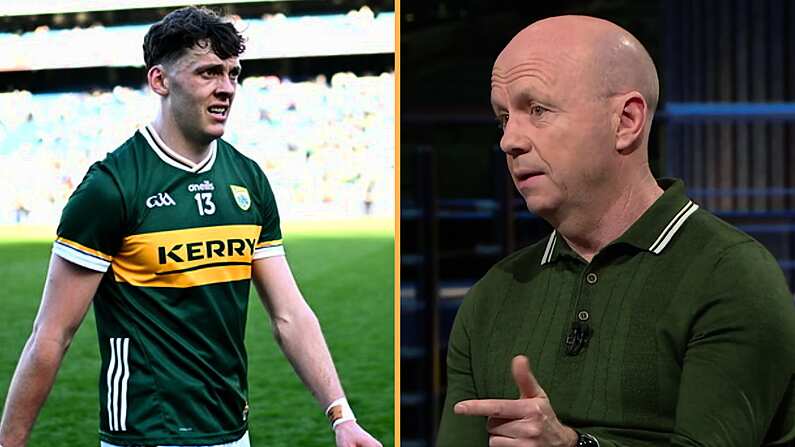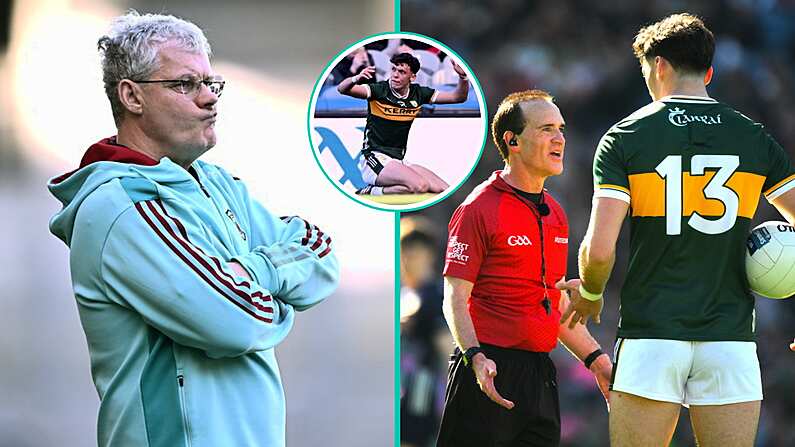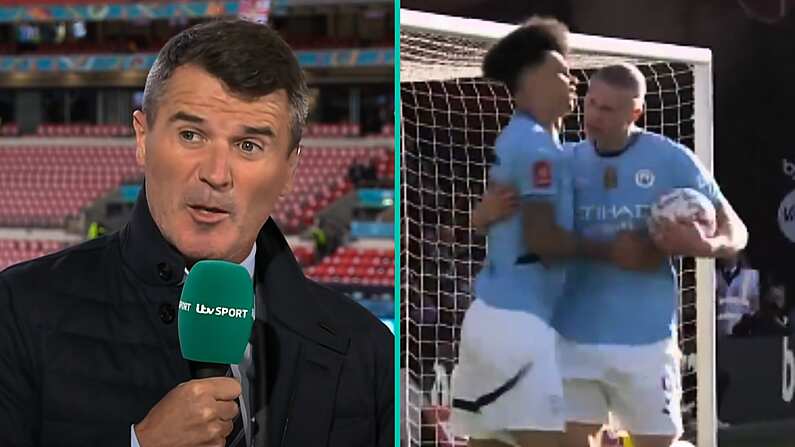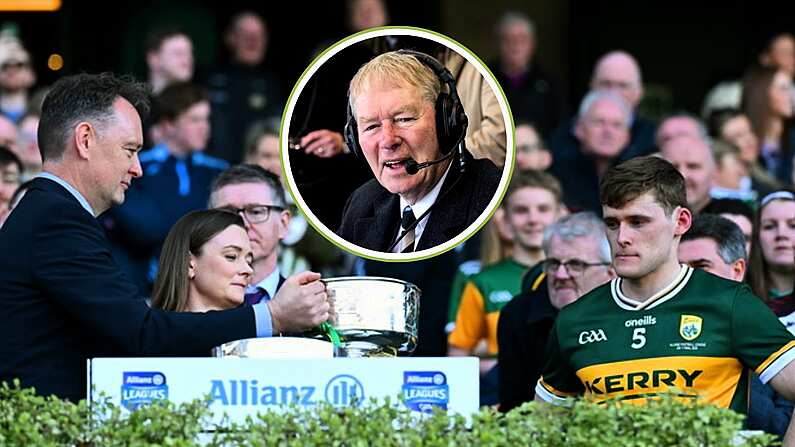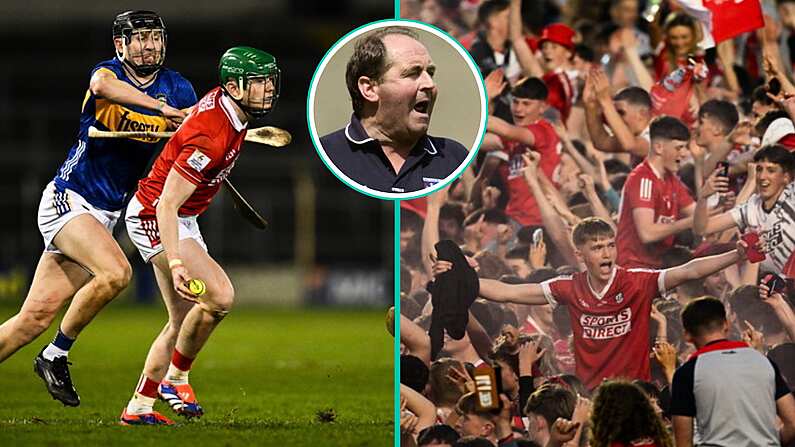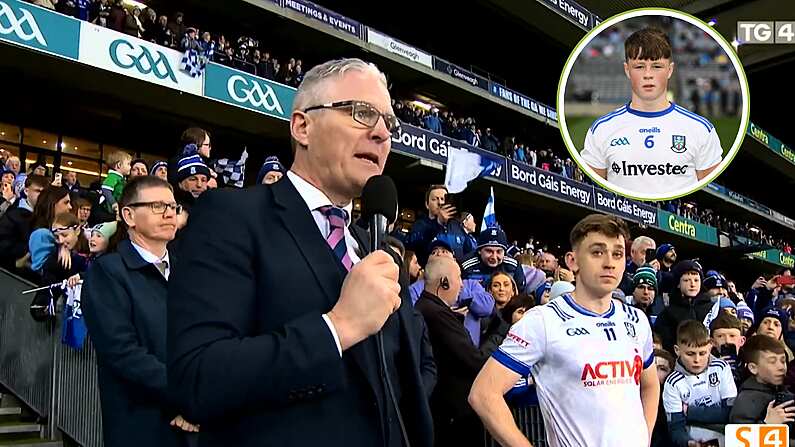In the modern game of Gaelic football, managers are meticulous in their approach to every aspect of the game. While the bulk of play is chaotic and disorganised, there are areas that can be planned for and practiced. The kick-out is an obvious example, but another underappreciated area is the throw-in.
Former Dublin All-Star and All-Ireland winner Kevin Nolan recently told Balls.ie that Jim Gavin's side target the start of games: "The big thing for teams is making sure Dublin don’t get a good start, that is what they aim to do." This begins the moment the referee blows the whistle.
The throw-in, if utilised correctly, is an immediate chance for a score. Primary possession in the midfield of the field is as good a platform as any. Teams can practice this area and have set moves rehearsed in order to get off to as strong a start as possible.
As one may expect, the best team in the country are the best exponents of this. Dublin's League campaign saw a strong partnership forge between their current midfield pairing of Brian Fenton and Michael Darragh MacAuley. One aspect they dominated was the throw-in.
The first example of this is from Dublin vs Donegal in the Allianz League.
MDMA steps back and then competes for the throw-in, Fenton does not but runs an arc around the referee.
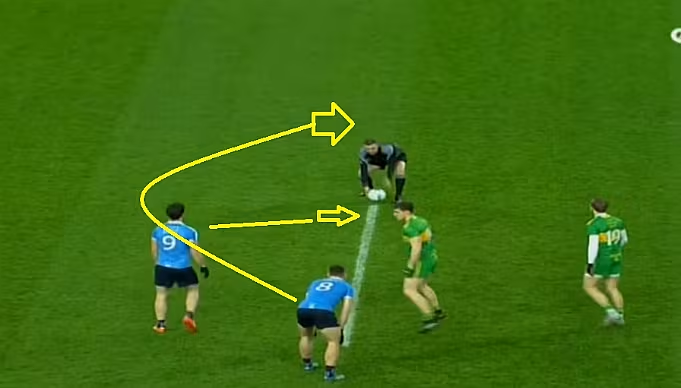
MDMA does not try catch the ball. His sole job is to break it into Fenton's path. No other Dublin player comes near the '45, creating as much space as possible for Fenton to break into.

Fenton collects in space and delivers a long kick pass over the top into the path of Ciaran Kilkenny. Dublin's wing forwards clear the centre, making space for Kilkenny's run. On this occasion, the move broke down and Donegal counter attack.

No one will win a game based on their throw-in strategy, but it is a practiced technique that can guarantee a good start.
Listen and subscribe to the latest episode of The So-Called Weaker Podcast, Balls.ie's weekly GAA show
In the Leinster final against Laois, Dublin ran the exact same move. If successful, they could orchestrate a goal chance within ten seconds.
Same starting position, MDMA closer to the centre, Fenton running on.

MDMA breaks the ball into Fenton's path, he collects and carries forward.

Both wing forwards clear the centre, so no man can meet Fenton. The centre-forward this time is Con O'Callaghan, who again runs in behind. Fenton pops him the ball.

After nine seconds, Dublin have a goal chance. If not for an outstanding save by Graham Brody, Laois would have been a goal down.

Last weekend against Donegal, Dublin were 0-1 up after 30 seconds. This score came from the throw-in.
This time, Fenton competed and MDMA blocked off both Donegal jumpers.

MDMA continued moving towards goal and Fenton punched the ball forward. MDMA collected, eventually laid off to Niall Scully who was fouled for an easy free.

Interestingly, Kerry also used one man as an obstruction against Galway. David Moran collected the ball easily and delivered it in long towards Paul Geaney.

They are not the only teams to do this. As highlighted by Peter Canavan on Sky Sports before the Mayo vs Kildare game, Cian O'Neill's side target the throw-in as well. Dan Flynn starts in midfield and obstructs the jumper to allow Kevin Feely collect.

If a move like Dublin's is successful, the result is a huge psychological blow. Inter-county teams spend weeks preparing for Dublin only to get off to the worst possible start. Dublin used rehearsed move's last year as well. The impact of Dublin's bench gets a huge amount of credit but if teams aren't careful, they could be beaten inside the first five minutes.



